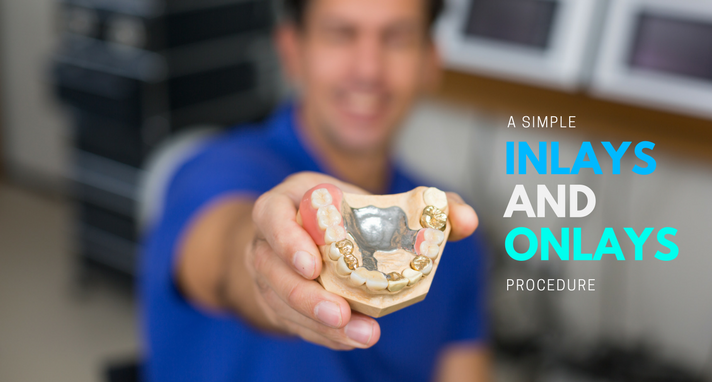33 Abbey Parade, Wimbledon, London SW19 1DG
33 Abbey Parade, Wimbledon, London SW19 1DG

When a tooth is too damaged to be fixed with a filling, yet not badly damaged enough for a crown, dental inlays and onlays come into play. Confidential Dental Clinic provide dental inlays and onlays to restore your teeth back to their full health and function. To receive high-quality dental treatment and protect yourself from tooth decay, simply book an appointment with your nearest dentist in Wimbledon today!
Inlays and onlays provide the same kind of repair, but are used on different areas of the tooth. An inlay is used to fill the spaces in between the bumps or cusps located on the chewing surface of a tooth. An onlay works the same way as an inlay, but is used to cover one or more cusps, and sometimes the entire biting surface of the tooth.
Inlays and onlays are made from a number of materials: gold, composite resin (plastic) or ceramics and have a lifespan of about 10 or more years. The exact amount of time inlays and onlays can last for is dependent on these main factors:
There are two varieties of inlays and onlays: direct and indirect. Direct inlays and onlays are made in the dental office and are cemented onto the tooth in just one appointment. Conversely, indirect inlays and onlays are made in a laboratory and require two visits to have them placed on the tooth. Your dentist will decide which type to use depending on the condition of your tooth.
The decayed or damaged tooth is extracted from the mouth before beginning the procedure. Therefore, pain is unavoidable but it can be minimised by using anaesthesia that is used to numb the nerves.
Firstly, your dentist will clear away any decay. Composite resin will be moulded to fit the tooth. The inlay will then be removed and hardened in a special oven. Once ready, the inlay will be bonded to your tooth and polished. New technology also offers the possibility to have a ceramic inlay or onlay fitted in the same visit.
Your tooth will be cleared of decay and an impression will be taken. The impression is sent to a lab where the inlay or onlay will be made. In the meantime, you will receive a temporary filling. At a second appointment, the temporary filling will be removed and the inlay or onlay is cemented and polished. To save time taking an impression, some dentists now use a machine to take a picture of the tooth. A computer then helps the machine make a ceramic inlay or onlay. This procedure allows the inlay or onlay to be created and fitted in the same one hour appointment.
Keep your inlays and onlays healthy by following a good dental care routine with regular brushing and flossing. It’s also important to attend regular checkups with your dentist so they can monitor your dental health. If you experience any sensitivity for more than a few days, call your dentist immediately.
There are a few dentists who perform this treatment as there is no formal training available in dental schools about this procedure. Most of them learn receive onlay and inlay training during their residency. Some dentists might send images to technicians for their suggestion on the case. They might even assist the dentist during the preparation of treatment guide or plan.
There is a small risk of cracking with inlays and onlays made of porcelain or composite resin. Inlays and onlays can also become loose if the mixture comes into contact with saliva as it’s applied to your tooth. To avoid this, the area should remain dry during the procedure.